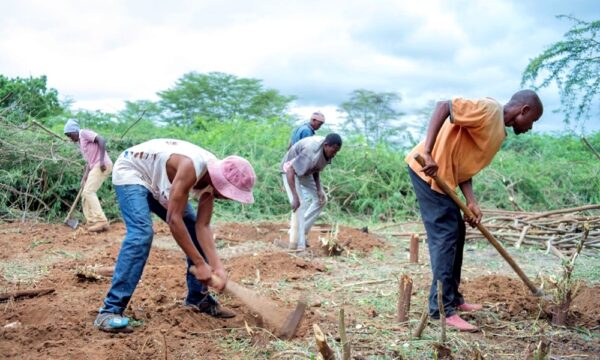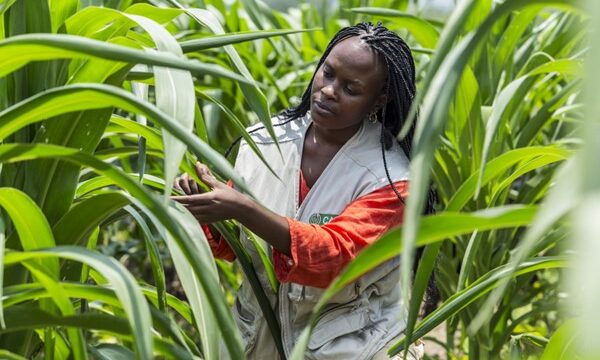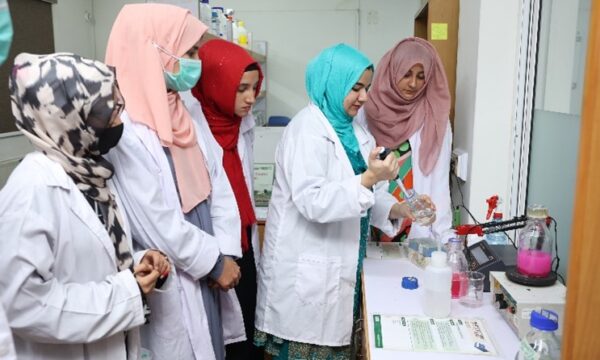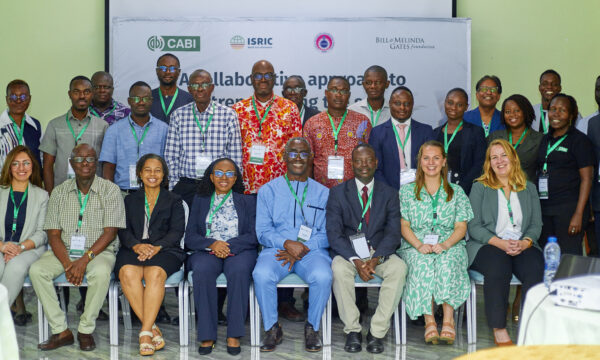St. Catherine’s College, Manor Road, Oxford, UK, 4-7th April 2016
Attended by M Djuric, CAB International, Wallingford, UK, on 5th April 2016 (Day 2)
This workshop meeting was jointly organised by the Pirbright Institute, Woking, UK and Cairo University, Egypt and was sponsored by the British Council Research Links Programme.
The aims of the workshop were to build long-term and sustainable links between scientists in the UK and Egypt working in the field of infectious diseases of poultry and livestock.
The second day of the workshop consisted of two sessions and included four invited expert and engaging presentations by Professor Mohamed Shakal, Professor Fiona Tomly, Professor Javier Guitian and Dr Roberto La Regione.
“Poultry production in Egypt: History and Facts," Professor Mohamed Shakal, Department of Poultry Diseases, Faculty of Veterinary Medicine, Cairo, Egypt.
Prof. Shakal was the first speaker on day two and he was also the co-organiser of the meeting. He began his presentation with an overview of his department and said that they were in the process of establishing a new Centre for Emerging and re-emerging avian diseases at the University of Cairo and would be moving into a new purpose built premises in Cairo within the next few months.
This was followed by his main presentation entitled “Poultry production in Egypt: History and Facts.” Prof. Shakal talked about a very long tradition of poultry production in Egypt; and cited the Harris Papyrus, which showed that Ancient Egyptians mastered artificial incubation of chickens and force feeding of geese (“foie gras”) 5000 years BC.
Nowadays, the poultry sector in Egypt accounts for 6% of total employment and contributes a large part of the country’s supply of animal protein. During the last decade of the twentieth century and the early years of the twenty-first century, Egyptian poultry production was sufficient to cover domestic consumption. Egypt was the number one poultry producer in the Middle East until 2006, when avian influenza decimated its poultry production, and as a consequence Egypt is now number four poultry producer in the Middle East.
Annual egg production in Egypt exceeded 4 billion eggs in 2000 for the first time, when the number of laying hens was estimated at 17.2 million. Of these, 11 million hens were in the commercial sectors, and 6.2 million of hens were in the backyard Balady sector, which provides the main source of income to approximately 90% of rural poor households, Prof. Shakal concluded.
“Coccidiosis in poultry: challenges for disease control in today’s global industry," Professor Fiona Tomly, Royal Veterinary College, University of London, UK.
Prof. Tomly highlighted some statistical data on poultry production, stating that global poultry production is expected to continue to grow by 5% annually up to 2050. Poultry accounts for 49.3% of meat consumed in the UK (29 kg per person annually).
Coccidiosis is caused by one of seven Eimeria species (red mites), which are ubiquitous, and it is the main parasitic disease of poultry in Europe, with about 90% of farms affected. 44% of antimicrobials used in the UK agriculture are used to control coccidiosis. Sulpha-drugs were used in the 1940’s, but did not work very well. Synthetic drugs were used between the 1950s and 1970s, and were very effective. Polyether ionophores became the mainstay treatment for coccidiosis since the 1970s. Resistance to ionophores has been very slow to accumulate.
Live attenuated vaccines are also available, but since the parasites do not grow in culture, the vaccine has to be produced in live chickens. This makes the vaccine very expensive to poultry farmers who are already struggling with low margins, because supermarkets have a very tight control of production chain in the UK and want to keep prices low for consumers. Since there are seven different Eimeria species that cause coccidiosis, and since there is a number of different haplotypes, this means that vaccines may need to be generated locally in order to offer protection.
“The role of epidemiology in the prevention and control of emerging public health threats," Professor Javier Guitian, Royal Veterinary College, University of London, UK.
Prof Guitian reminded the audience that diseases do not occur at random, and this is what epidemiology is about, i.e. to observe patterns of diseases and try to prevent them. He gave an example of BSE testing in the UK, where 2 million cattle were tested for BSE, of which 2000 were infected but only 300 of these were detected by random testing. This example was used to demonstrate the role of epidemiology to discover patterns of disease, and hence reduce the number of tests while increasing detection rate. In the case of BSE, cattle over 20 months were 4-fold more likely to be infected. Movement of cattle and mapping of farms also helped to identify particular farms that are more likely to be infected.
Another example that Prof Guitian used to demonstrate the role of epidemiology in the control of infectious diseases in livestock was Brucella melitensis. This pathogen is sustained by small ruminants, but cattle and buffaloes are also susceptible. Although B. melitensis in sheep can be controlled by a vaccine which is very effective, there is no vaccine for cattle and buffaloes. B. melitensis is a recurrent disease in sheep in countries such as Egypt, Jordan and Iran, and is still a challenge, despite their governments spending large amounts of money and using veterinary services to vaccinate sheep flocks. Since sheep and goats are kept together with cattle and buffaloes in these countries, B. melitensis infection circulates among these animals despite the vaccination of sheep.
Prof. Guitien also commented on an education programme in veterinary epidemiology initiated by the OIE Veterinary Education. The OIE has recognised that its reference laboratories for many animal diseases are usually situated in developed countries which are also free of the particular disease. Therefore, the OIE is now encouraging twining of institutions from developed and developing and middle income countries so that reference laboratories can be established in developing and middle income countries. The RVC welcomes this initiative.
“Modulating the gut microflora as an alternative to antibiotics to control infectious diseases in livestock,” Dr Roberto La Regione, University of Surrey, UK.
Dr La Regione began his presentation saying that the amount of antibiotics used in animal production is not reducing. Most antibiotics are used in aquaculture, but significant amounts are also used in other livestock species, such as poultry and pigs. Approximately 70% of antibiotics are used in non-therapeutic purpose, and this leads to the development of super-bugs, which are resistant to antibiotics.
However, he pointed out that antibiotic resistance problems are exacerbated by the fact that antibiotic resistance genes were found in bacteria long before antibiotics were ever used on super-bugs in farm animals. Illegal meat importation further complicates the problem of antibiotic resistance and Dr La Regione estimated that 7500 tonnes of illegal meet products enters Great Britain every year. Considering the fact that 75% of recently emerging diseases in humans are of animal origin, this is truly One Health Issue.
Dr La Regione emphasised that antibiotic resistance is a worldwide problem for both animal and human health and that modulating the gut microflora may help alleviate this problem. Probiotics, prebiotics, synbiotics, phage therapy and enzymes are all used to modulate the microflora. Probiotics are live microorganisms, which confer some health benefits to the host, whereas prebiotics are non-digestible food ingredients that have benefits and they are usually sugars. Dr La Regione concluded that prebiotics and probiotics are viable alternatives for prophylactics and can reduce the need to use antibiotics.
Further reading on antimicrobial resistance
The following blogs explore the use of antimicrobial agents in farming and antimicrobial resistance, including antibiotic resistance:
Limitations of Voluntary Plan for Phasing Out Non-Medical Antibiotic Use in Farm Animals in USA
British Vets Resist “Political Measures” to Restrict Veterinary Use of Antibiotics
European Antibiotic Awareness Day Highlights Threat of Antibiotic Resistance
Related News & Blogs
Strengthening the potato value chain in the Kurdistan Region of Iraq
On 30th May, we marked the International Day of Potato. In this blog, CABI’s Crop Health Advisor Anna Wood provides an update on a five-year project led by CABI to strengthen the potato value chain in the Kurdistan Region of Iraq. An ambitious five-yea…
3 June 2025




